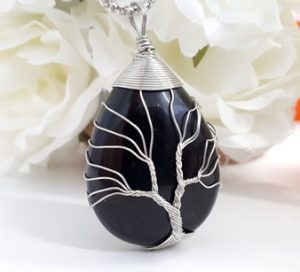
Find Your Zen: The Ultimate Guide to Designing a Tranquil Meditation Space
In our fast-paced world, finding moments of stillness amidst the chaos can be a challenge. A dedicated meditation space can be your sanctuary, a refuge that promotes relaxation and mindfulness. To help you create an environment that encourages peace and tranquility, follow this ultimate guide to designing your perfect meditation corner.
1. Choose the Right Location
Finding the right spot in your home is crucial for creating a serene meditation space. Select an area that is away from distractions, such as loud noises or high traffic. A spare room, corner of a bedroom, or a quiet nook in the living room can work perfectly.
Tip: If possible, choose a space with natural light. Natural light elevates mood and creates an inviting atmosphere.
2. Declutter and Clean
A cluttered space can lead to a cluttered mind. Begin by decluttering your chosen area. Remove anything that no longer serves you or feels out of place. Clean the space thoroughly to foster a sense of freshness.
Tip: Consider adopting a minimalist approach. Limit the number of items in your meditation space to avoid distractions during your practice.
3. Select Calming Colors
Colors play a vital role in influencing mood and energy. Choose a color palette that promotes calmness and relaxation. Soft shades of blues, greens, or earthy tones can evoke a sense of tranquility.
Tip: Paint the walls a soothing color, or incorporate calming hues through textiles, decor, and accessories.
4. Comfortable Flooring Options
The floor is where you’ll be practicing meditation, so choose comfortable flooring. If you have hard surfaces, consider adding a soft rug or mat for comfort. Natural materials such as bamboo or cork can add warmth and connection to nature.
Tip: Choose a non-slip surface to make your practice safe and enjoyable.
5. Mindful Furniture Choices
Your meditation space should be furnished with comfort in mind. Opt for simple furniture that is both functional and aesthetically pleasing. A meditation cushion (zafu) or a yoga mat can be invaluable for your practice.
Tip: If space permits, consider using low benches or chairs designed for meditation. These furnishings help maintain comfort while encouraging proper posture.
6. Incorporate Nature
Nature is a powerful influence on our emotional and mental well-being. Bring the outdoors inside by incorporating natural elements. Plants like peace lilies or succulents purify the air and bring life to your space, while calming stones or crystals can enhance your meditation practice.
Tip: Create a small indoor fountain or a bowl of water to add the calming sounds of water, promoting relaxation.
7. Create a Mood with Lighting
Lighting sets the ambiance of any space. For your meditation area, choose soft, adjustable lighting that encourages relaxation. Dimmer switches, floor lamps, and candles can help create a warm atmosphere.
Tip: Use Himalayan salt lamps or LED candles for a soft glow without any fire hazards.
8. Personalize with Meaningful Decor
Incorporate decor that resonates with your personal journey. This may include meaningful artwork, photographs, or even inspiring quotes displayed within the space. Keep your personalization minimal to avoid overwhelming distractions.
Tip: Create an altar or a dedicated corner featuring items like crystals, incense sticks, or spiritual objects that hold significance for your practice.
9. Sound and Scent
Engaging multiple senses can enhance your meditation experience. Consider adding a sound system for meditation music or nature sounds to drown out external noise. Aromatherapy plays a similar role in creating tranquility, so invest in essential oils, diffusers, or incense.
Tip: Lavender is known for its calming properties, while citrus scents can uplift your mood, so choose fragrances that enhance your experience.
10. Consistency is Key
The final step to a truly tranquil meditation space is consistency. Make it a regular practice to spend time in your meditation corner. Keep it inviting and ready for use to ensure it remains a sanctuary.
Tip: Dedicate this space exclusively for meditation to create a mental association that fosters peace and mindfulness.
FAQ Section
Where can I find meditation accessories?
You can find a variety of meditation accessories at local wellness stores, holistic shops, or online marketplaces like Amazon, Etsy, and specialized meditation stores. Look for cushions, mats, and decor that resonate with you.
What type of plants are best for a meditation space?
Low-maintenance plants such as peace lilies, snake plants, or pothos are ideal choices, as they bring natural beauty and improve indoor air quality.
Can I still meditate without a dedicated space?
Absolutely! You can create a peaceful environment anywhere, even if it’s just a corner of your room or a spot in nature. It’s all about the intention and mindfulness you bring to your practice.
How often should I meditate in my space?
The frequency of meditation varies for each person. Aim for at least a few minutes daily, gradually increasing as you find comfort and establish your routine.
Designing your tranquil meditation space is an invigorating and personal journey. With deliberate choices and a focus on creating a peaceful atmosphere, you’ll create a sanctuary that fosters serenity and enriches your mindfulness practice. Embrace the process and enjoy your path to finding your Zen!







